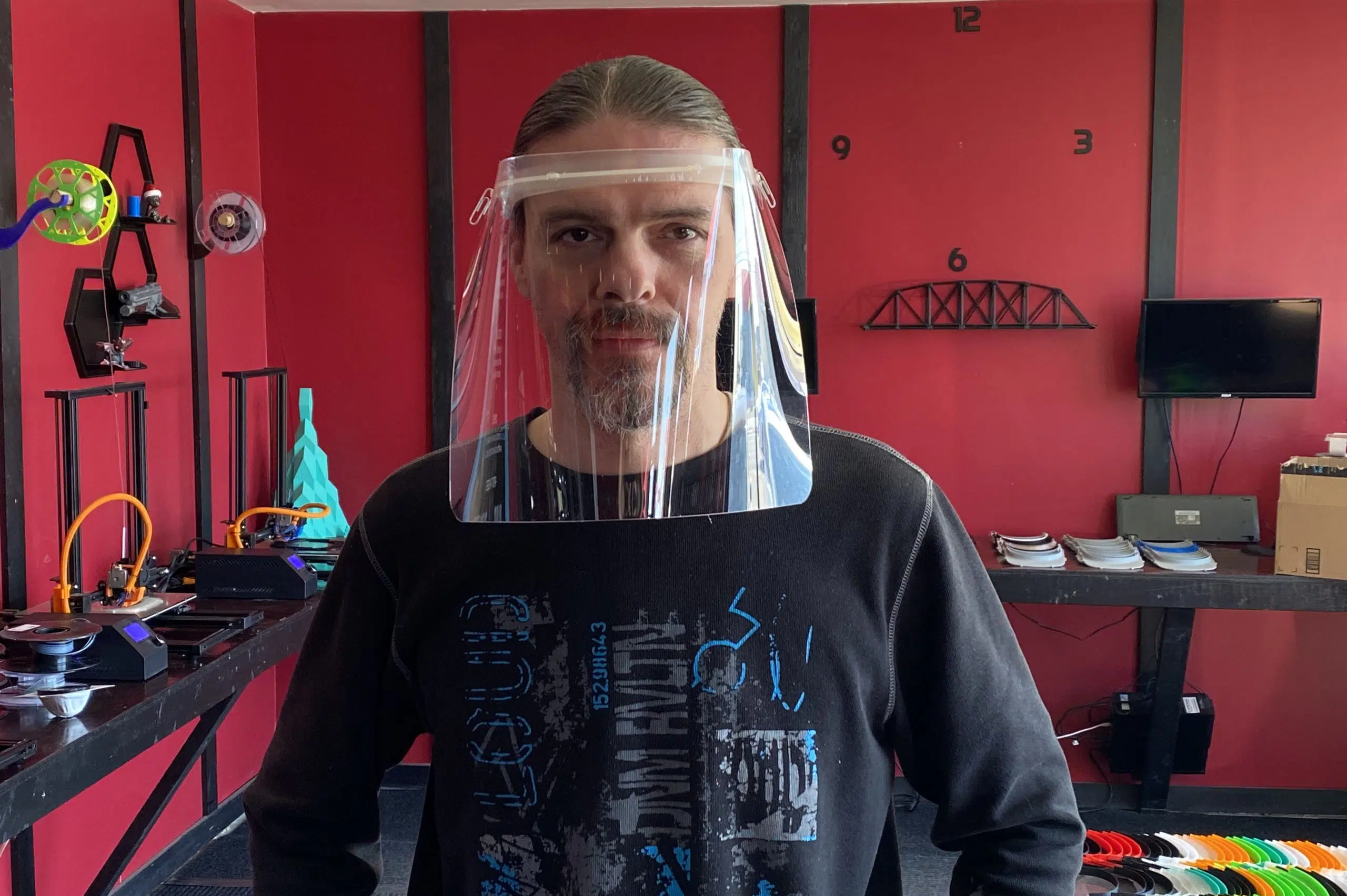Upon walking into Wave of the Future 3D Printing Cafe in Saskatoon, there are a few things that one will notice. Obviously, the first thing is the awesome, seven-foot-tall, 3D-printed Baby Groot statue that is there to greet you when you step inside the door.
The next thing you notice is there aren’t any customers in there, which isn’t surprising as people are staying inside their homes during this global pandemic. But the third thing that stands out is the gentle hum of most of the cafe’s 3D printers all working non-stop, despite the lack of customers.
That’s because their machines aren’t working on customer projects. They’re working on building face shields that will be donated and distributed to health care workers across the province and the country.
“Right now we are close to about 2000 made. Already given out upwards of about 500 of them already and now we are just waiting to get certification through the government of Canada so that we can actually supply these to the hospital as well,” said owner Randy Janes.
“One of the surgeons in the city has grabbed 30 of them and put them in three ER’s in the city here to test them out while I’m waiting for the papers that say I’m actually able to supply them non-stop as well.”
Janes currently has 28 of his 50 machines running non-stop, pumping out about 60 headpieces every hour and a half and is waiting on a shipment that will soon allow him to run all 50 machines at once.
Initially, Janes planned to buy and cut the plastic fronts himself using an X-Acto knife but after not having much success, the company Shear Fabrication offered to help cut the clip-on shields for him.
Once word got out about this endeavour, Janes started getting calls from all over from people wanting to get ahold of some of his products.
“I am getting phone calls from Ontario, Vancouver Island, from California, New Brunswick, all over the US people are just asking if we can actually ship them to them as well,” he said.
“So we are definitely trying to look out for home first but also be able to help all over the world if we can do so.”
When the virus first started to get more attention and the shortage of face masks started to grow, Janes started seeing stories on the 3D printing forums of people using their personal machines to make masks for health care workers in their areas.
When the virus hit in Canada, Janes’ business immediately lost 95 per cent of its revenue. But instead of closing his doors and cutting his losses, he figured he might as well use up the rest of his materials to make some masks before closing down.
“When I was closing my doors and I started this, I was just going to use up whatever filament I had but I bought some plastic out of my own pocket and figured I’d start donating them until they are all gone. I didn’t see an advantage of profiting off a situation like this so that’s why I thought I’d do all donations,” said Janes about how he got started making the shields.
“But we found there is such big demand so we decided we’ll see if a GoFundMe page will actually allow us to at least keep our doors open to continue printing these, so that’s what we did.”
Their GoFundMe started with a goal of $5,000 and reached that quickly. So they decided to increase it because of the amount of interest their masks have received from all over the world.
Currently, they have raised just over $7,000 of their new $10,000 goal.
Despite the constant donations that go straight towards materials for the masks, the business itself is losing money. But Janes is staying optimistic about his options.
“I haven’t really broken it down yet but it’s definitely adding up. I’m definitely creating a bigger debt in the backside while I’m still running,” he said.
“But maybe, in the end, it will work out that we can get a contract with the hospitals after the fact to continue helping them out with medical stuff or something. Or there are a lot of government programs out there that we are looking at to try and keep our doors open until this is done.”


